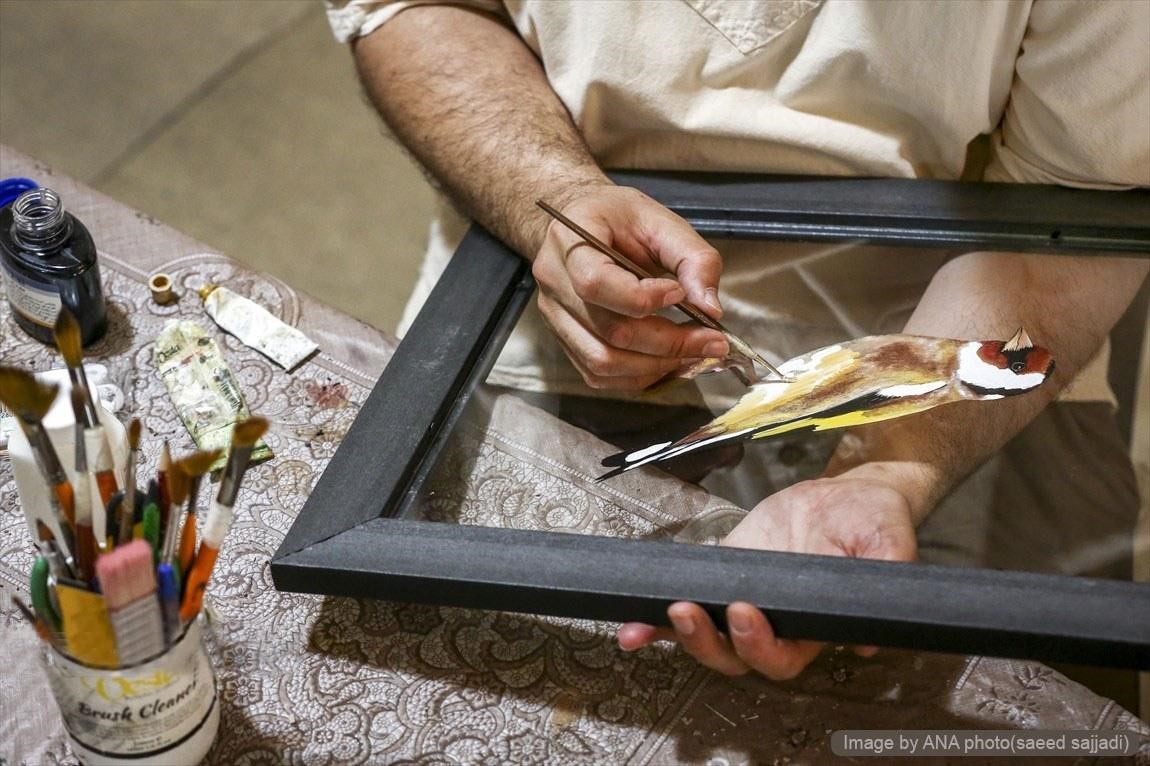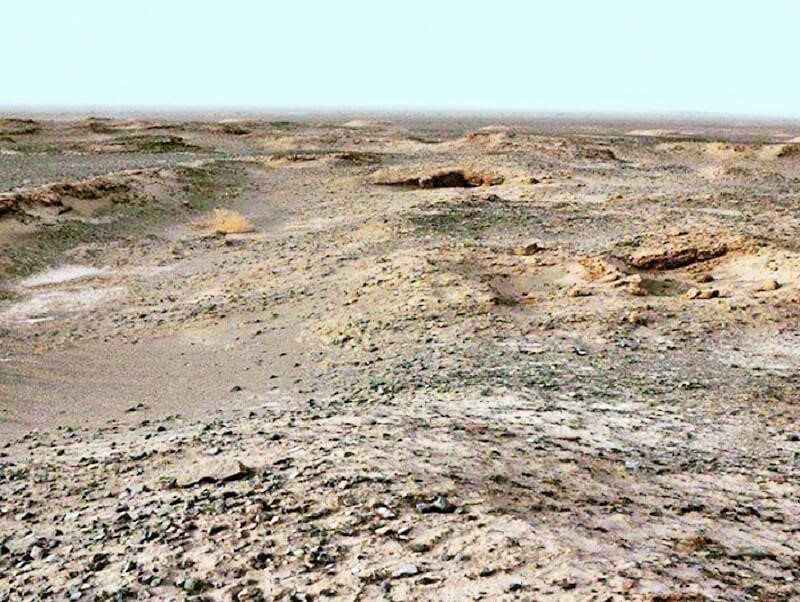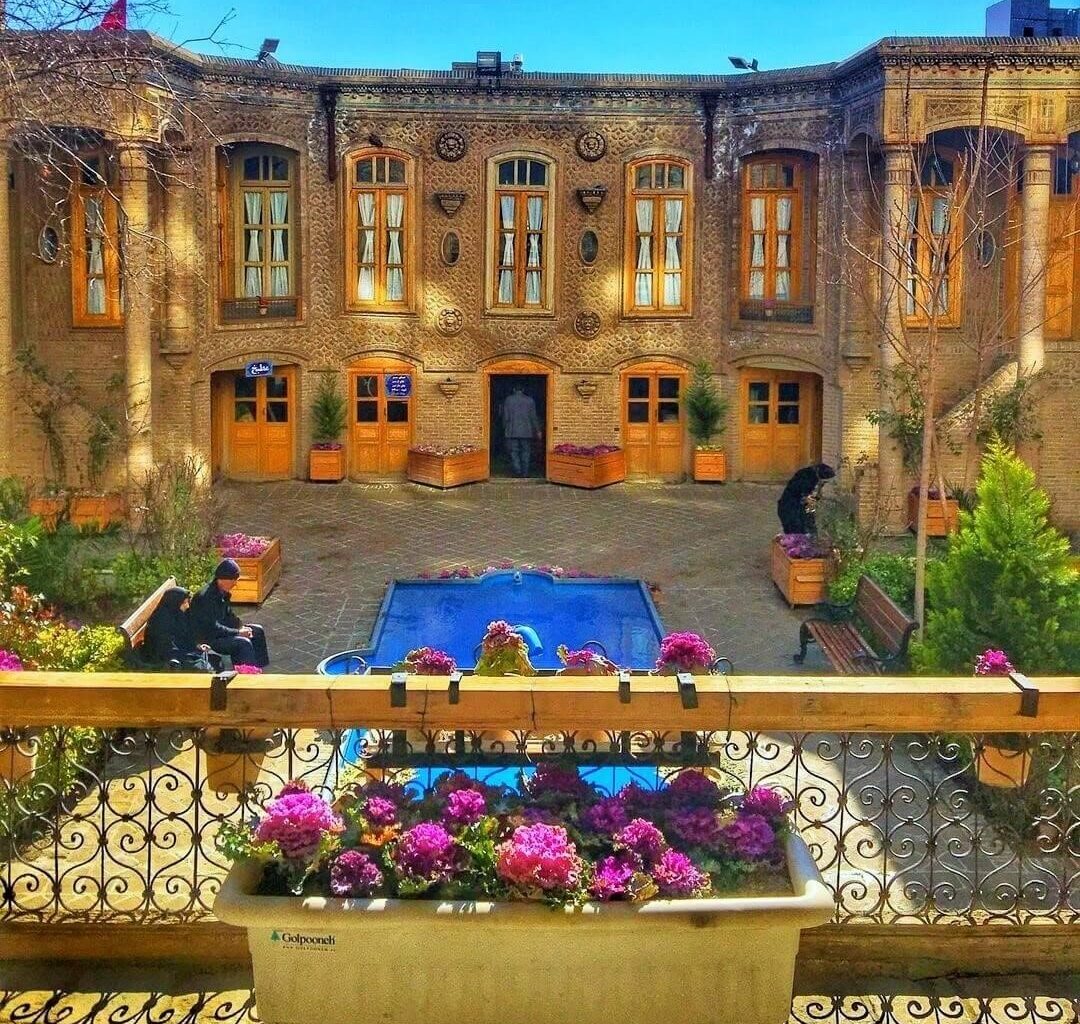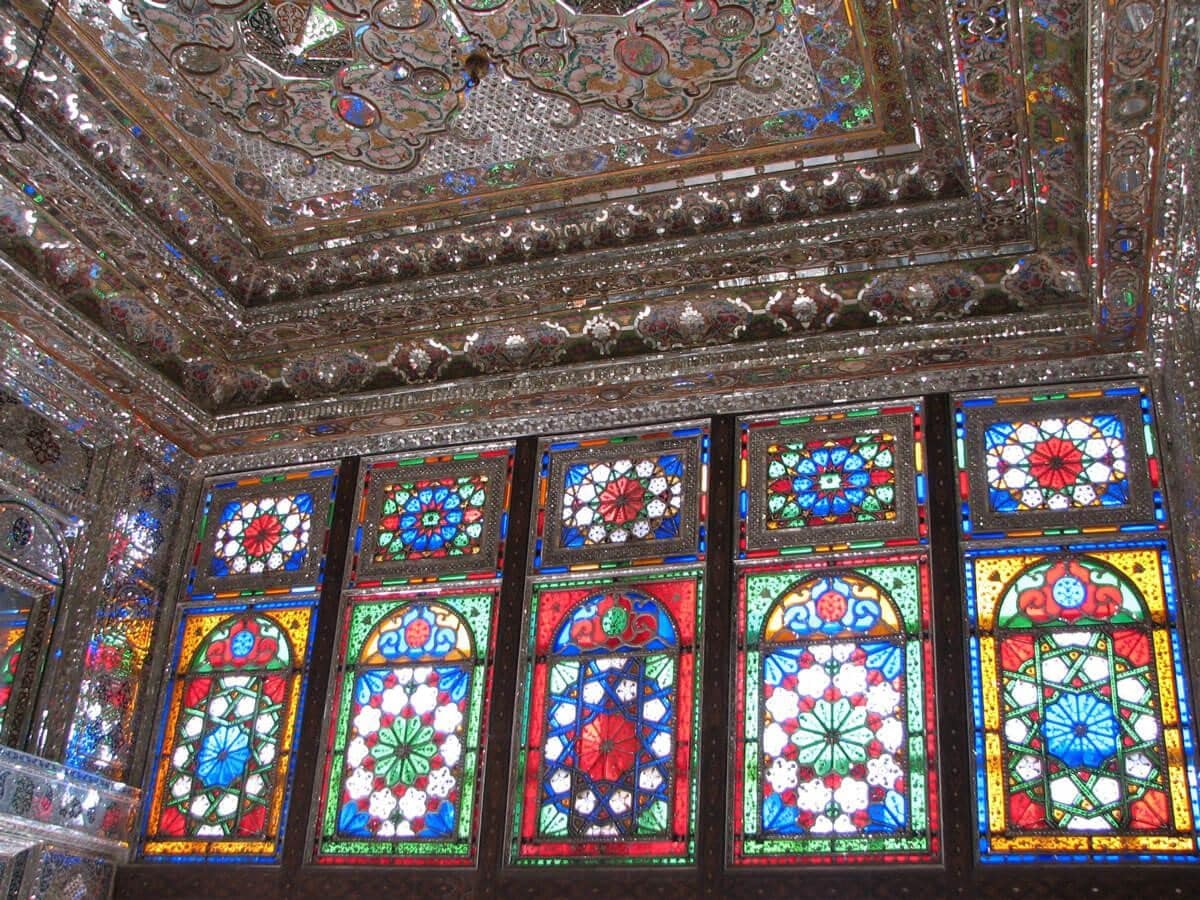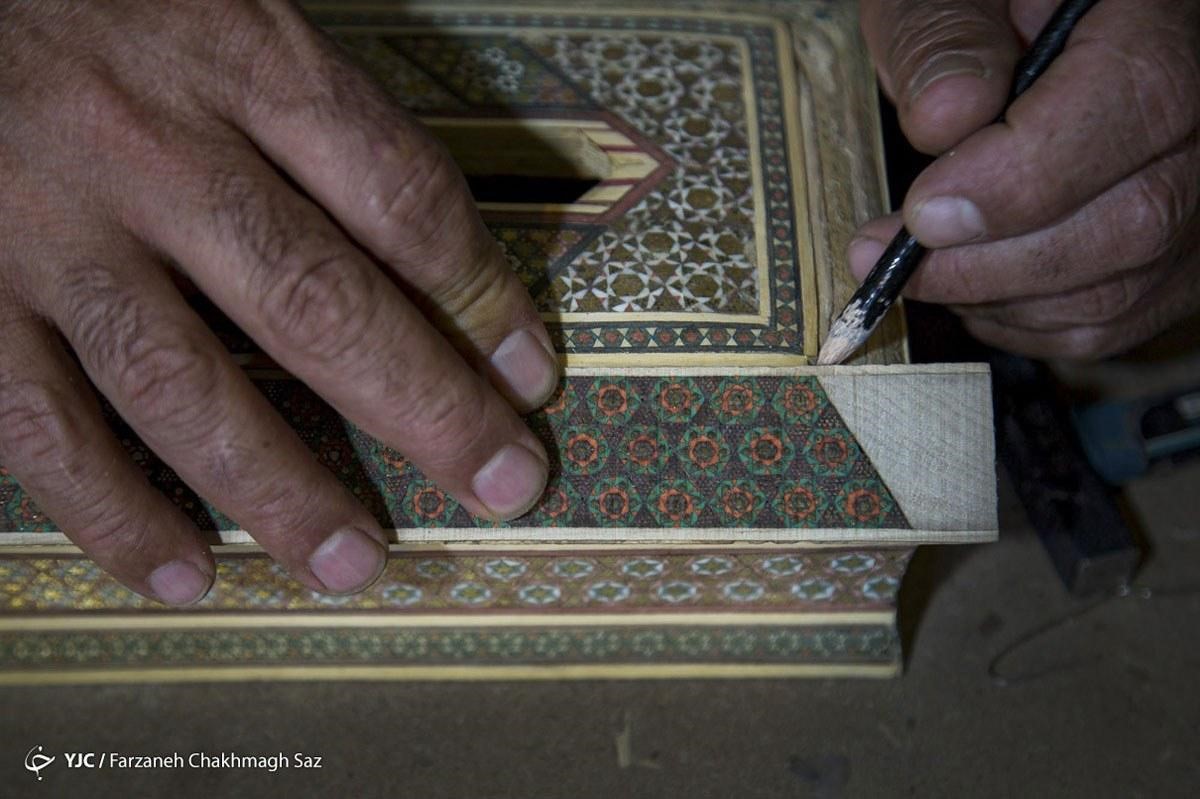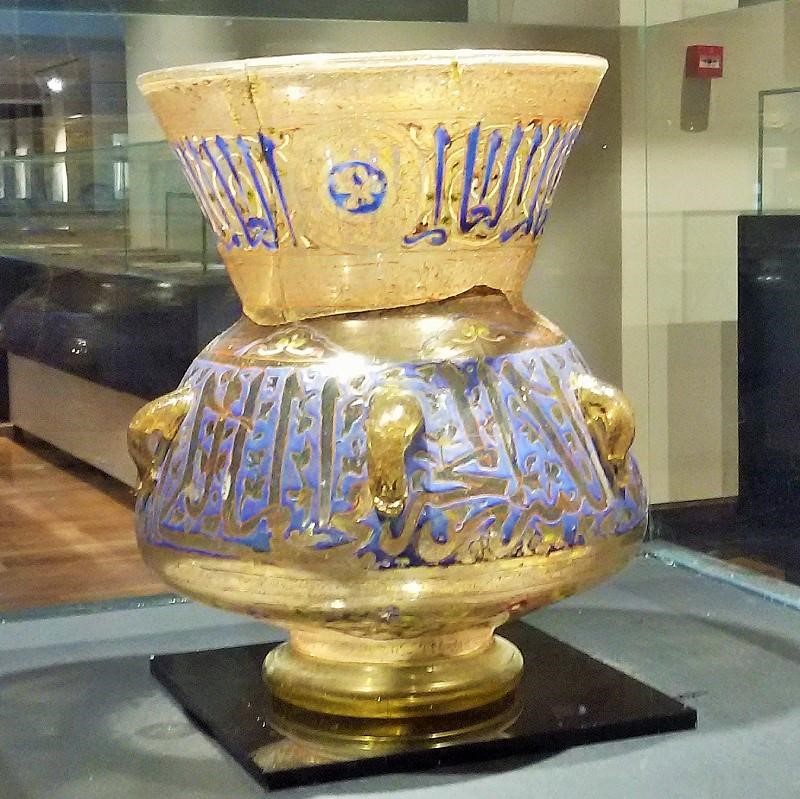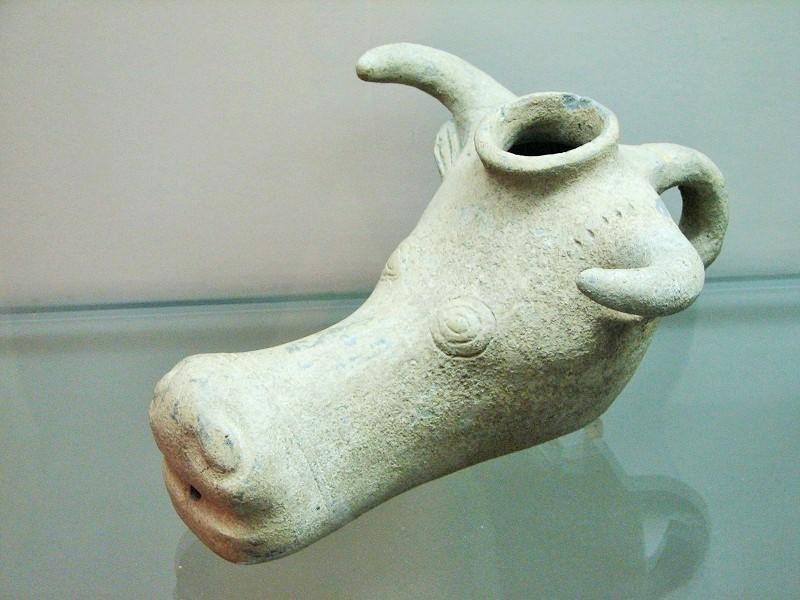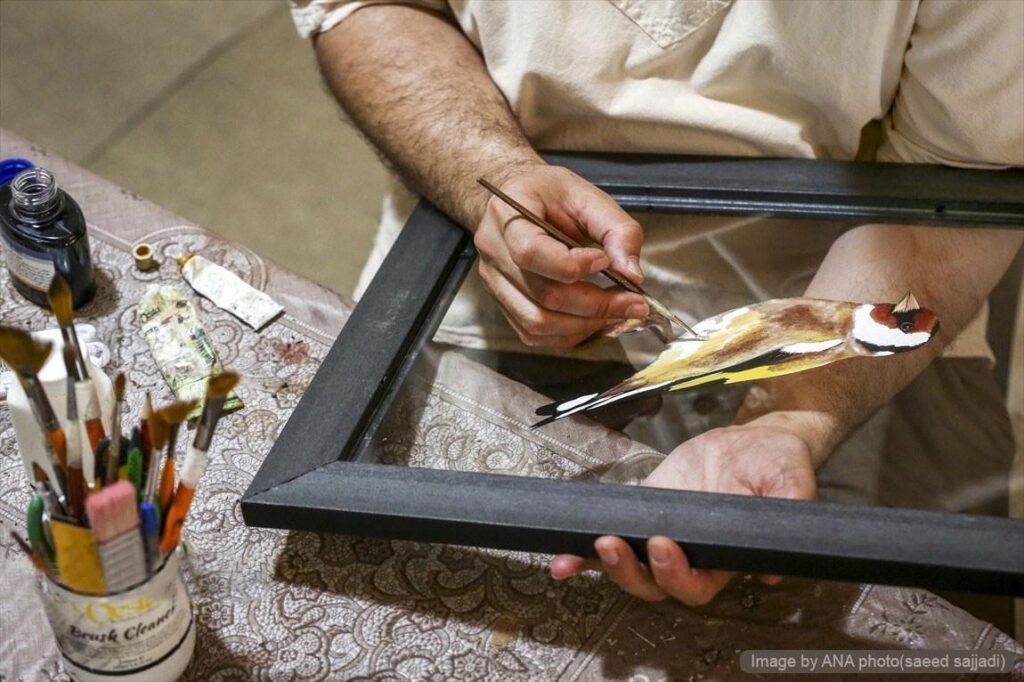
Reverse painting on glass is a pre-Roman handicraft art imported from Eastern European countries, India and China. This art arrived in Iran in the Safavid period and soon after was combined with Persian designs. Iranian examples in this field of Iranian handicrafts are different from their Western counterparts.
Reverse Glass Painting Materials and Color Scheme
Various materials are used in this handicraft, which include:
- Colored papers, fluorescent tapes, threads, silk fibers, leather, and gold sheets to create a better background, unique brush and palette knife, glass in desired dimensions, and initial pattern.
In addition, special color schemes are utilized in this type of handicraft. These colors include green, brown, yellow, red, black, blue, and white.
How to Do Reverse Painting on Glass?
In the past, reverse glass painting artists usually followed these steps to create paintings:
- First, the artist would choose a design and create punctured patterns on the lines of this design using a needle.
- Then they would place a piece of paper beneath the design and gently dust it with charcoal powder to imprint the desired design to the underlying paper.
- The intended design was finished using a pen on paper and placed under the glass.
- The next stage was the act of outlining. The visible design behind the glass was painted or written on the front side using pen and ink.
- The glass piece was placed in a suitable place for the ink to dry.
- The shades on the design were painted with colored ink. Due to the lack of coating for these colors, the back of the painted area was visible from the glass.
- In the last stage, due to the bold edges of the shaded areas, the artist would fade them according to their taste. This process was done with round and fine brushes.
- Finally, the desired design was reverse-painted on the glass.
In reverse painting on glass, the details are executed first, and then the background is painted. Finally, the design is generally applied to the glass.
Common Designs in Reverse Painting on Glass
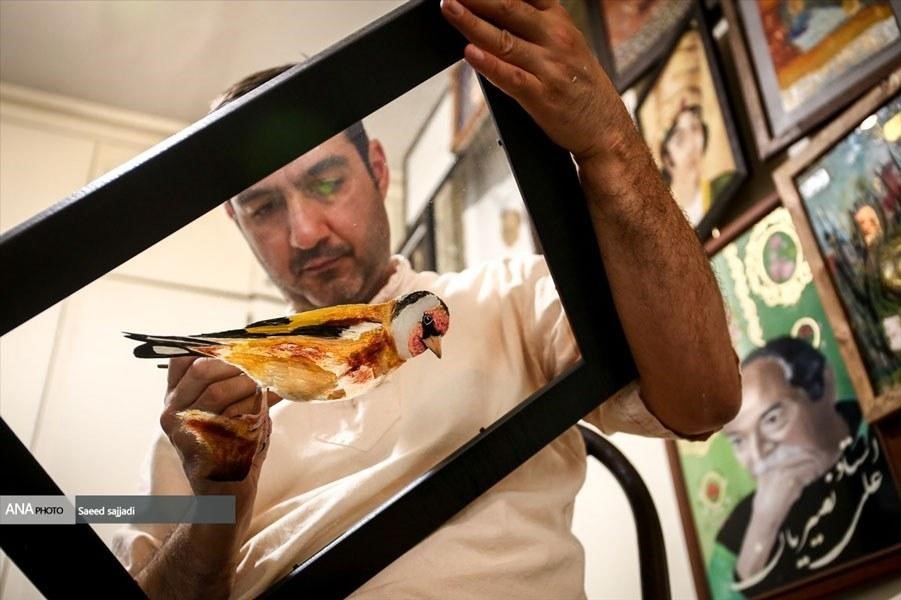
Iranian artists usually use certain designs in reverse painting on glass, which are:
- Colored borders, flowers, birds, figures and portraits, religious events, battle scenes, human and animal motifs, landscapes, Quranic verses, and Islamic rites.
One of the subcategories of this handicraft art is “reverse painting on the mirror” in which the silver or mercury part of the mirror is carved. Then, the desired color is applied to the carved parts to create the desired pattern.
Reverse Glass Painting Applications
This craft was used to decorate glass containers at the beginning of its invention. Then, with the increase in popularity, it was used to decorate sacred buildings such as mosques and churches and to embellish aristocratic homes.
Currently, these handicrafts are nearly extinct. Nevertheless, some artists try reviving this art in decorative dishware, ornamental mirrors, etc. The art of reverse painting on glass has been introduced to the new generation through temporary and permanent exhibitions.
Unfortunately, master painters who practice this art mostly generate income by teaching this art. In other words, the demand for reverse glass painting handicrafts is diminished. However, with the development of the tourism industry and the promotion of this traditional Iranian handicraft, we hope the market is revived.
Reverse Painting on Glass Museum in Tehran
The reverse glass painting museum in Tehran is the second museum of this handicraft art in the world. Many examples of these handicrafts from the Safavid era are on display there. The mentioned museum is in one of Tehran’s Qajar historical houses, which belongs to the late Dr. Siavash Shaghaghi.
After Shaghaghi’s death, the house was acquired by another person. It was endowed with the Cultural and Artistic Organization of Tehran Municipality in 1995. This house was used as a reverse glass painting museum in 1998 and was placed under the supervision of the Cultural Heritage Organization office.
In 2010, the artworks of this museum were moved to Tehran’s Azadi Tower for a while at the discretion of the Cultural Heritage, Handicrafts and Tourism Organization. In addition, the said museum was closed for some time for repairs. Now, this museum has been reopened to introduce the art of reverse painting on glass.
Maison Shaghaghi Architectural Style and Features
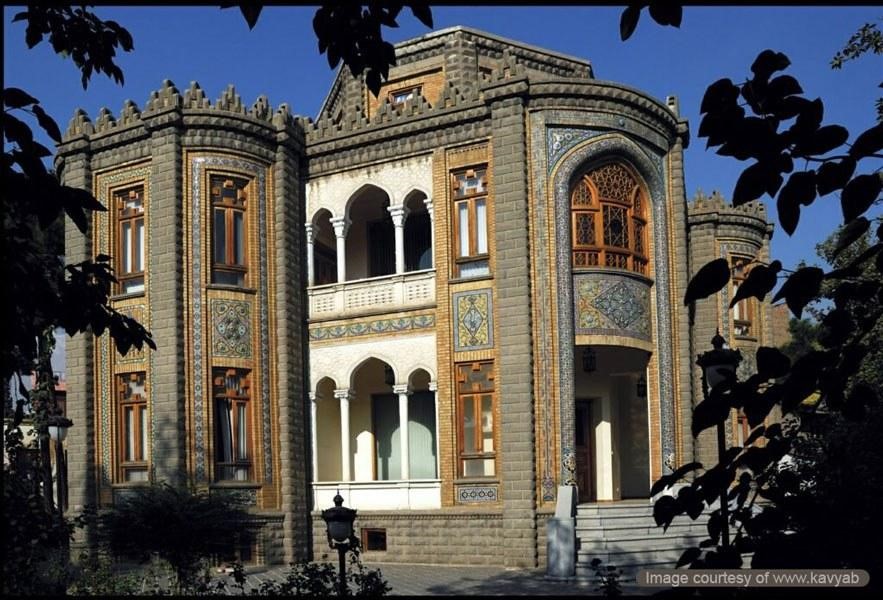
Maison Shaghaghi or the Shaghaghi Mansion is known as the reverse painting on glass museum and dates back to the late Qajar period. This building features Iranian-European style architecture and was inspired by the houses of the Qajar period. The building has an infrastructure of about 350 square meters and is located on a land plot of 650 square meters.
This building design follows the principles of Iranian architecture. It contains a very beautiful courtyard with the Chahar Bagh design (quadrilateral garden). In the center of this courtyard, there is a beautiful fountain and a laundry room can be seen on the south side of it. At the end of the yard, there is a three-story Shaghaghi mansion, which has a basement, ground floor, and first floor.
The mentioned building has a white facade, featuring all common Iranian architectural elements such as wooden doors and windows, lancet arches, plasterwork designs, and more. In addition, one of the most important decorations of this mansion is its colored plasterwork, which creates a very beautiful view.
Visit Reverse Painting on Glass Workshops in Iran
Reverse glass painting is among Iranian intangible cultural heritage that should be promoted in cultural heritage tourism campaigns. Artworks related to this handicraft are exhibited every year in handicraft workshops and the museum.
Destination Iran invites you to visit local handicraft workshops and purchase their products while visiting tourist attractions. In this way, you can support local economies and be effective in preserving and promoting traditional handicrafts.






